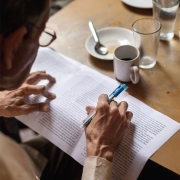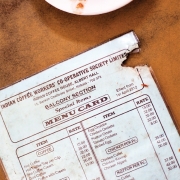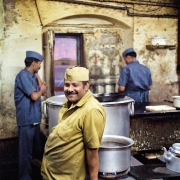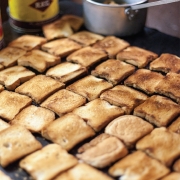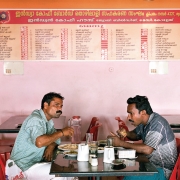
Etcetera
Travel; lifestyle; heritage and arts; books and miscellany

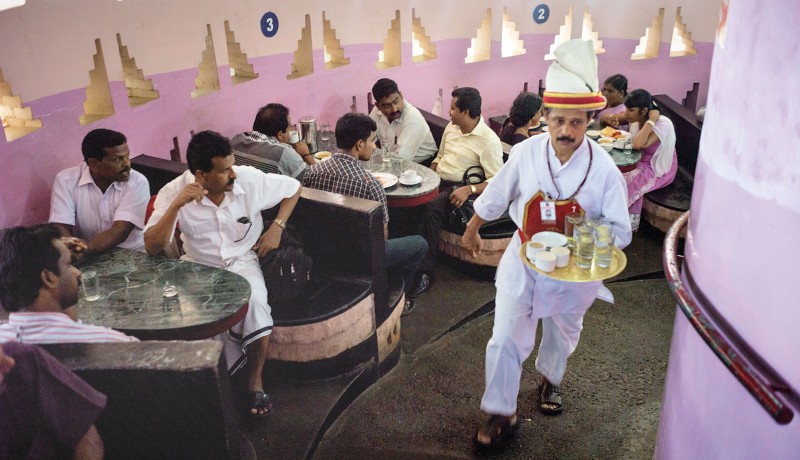

In The Palaces of Memory – Tales from The Indian Coffee House (Tasveer; 224 pages; ₹ 2,500), British photo-journalist Stuart Freedman captures intimate moments amid the cacophony that is the historic Indian Coffee House and narrates his experiences after visiting more than 30 of them across the country
The circular coffee rings on the faded plastic table work like an old map of the city, a cartography from one era of Delhi to another. The waiter Gopal Singh, who has worked here since 1981, wipes them away with a well-used rag. A big man with a square head and an impressively starched turban crowning his face, Singh wordlessly takes an order and moves swiftly away. A steel tray held expertly in his upturned palm contains half a dozen empty, chipped coffee cups. Above him a tired ceiling fan ticks and clicks and whirls, battling bravely against the Delhi heat and dust.
On a spring day in 2011, the ‘women and family’ section is half-full. The booths of dark wood are cracked and stained. The leatherette sofas have burst, revealing their metal spring guts. Surgery to repair them with duct-tape has on the whole failed. Still intact but deeply sagging seats bear the imprints of a million corpulent Delhi bottoms.
Two tables in front an older man, his henna’d hair slicked down, reaches over and whispers to his younger, female companion. She turns her head and smiles. He retreats, victorious. A wife? A lover? A million days whiled away over coffee. A million stories. Opposite, an elderly couple sit silently facing each other. She wears a pretty sari, he a shirt and slacks. You just know that they have been coming here for years. The ritual. The same table, the same time, the same idly and vada. These are ordinary Delhi-wallahs: not the nouveau riche with their sleek cars and their appalling me-first, India-Shining-manners. Not the poor—who are being systematically written out of the narrative of modern India—but ordinary people still trying to hang on to a civility in a city that is increasingly no longer civil.
…
When I arrived in New Delhi in the mid-1990s, the Indian Coffee House on Baba Kharak Singh Marg was a refuge. I had already travelled widely and made work in the region in both Pakistan and Afghanistan but Delhi seemed somehow wilder and more complicated. I struggled to understand its complexity; its jarring layers. It somehow reminded me of London. I grew up in the 1970s in Hackney—now a byword for bohemia—then a motif for inner-city poverty….
The Coffee House reminded me of the places from which I knew I had to escape and explore the world. In a sense I had come full circle. The Coffee House taught me a very valuable lesson; that the people whiling away their days over coffee in gloriously chipped cups were the same as the people of my Hackney past. The ‘other’ was not strange and unknowable but similar. The conversations I was invited to join—of politics and poetry—were the same I’d shyly listened to in Hackney. Suddenly, I felt more at home in a strange city and, when I travelled in India on assignment, I sought out Indian Coffee Houses and they never disappointed.
Extracted from the original essay written by Freedman in The Palaces of Memory – Tales from The Indian Coffee House, published by Tasveer and supported by Dauble, that accompanied a travelling exhibition of the same name
Featured in Harmony — Celebrate Age Magazine May 2018
Small yet impactful choices can be game-changers, writes Srirekha Pillai At 102, there’s no stopping Chandigarh-based Man Kaur, the world’s….
While a regulatory framework is vital for senior-care facilities, the need of the hour is to develop an ecosystem to….
Published in a special edition to honour Japanese master storyteller Haruki Murakami’s 70th birthday, Birthday Girl (Penguin; Rs 100; 42….
Published as the revised and updated second edition, Incomparable Sachin Dev Burman (Blue Pencil; Rs. 599; 470 pages) the authoritative….

Harmony Celebrate Age
502 Plot No. 91/94
Prabhat Colony
Santacruz (East)
Mumbai – 400055

